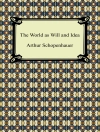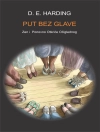Merleau-Ponty has long been known as one of the most important philosophers of aesthetics, yet most discussions of his aesthetics focus on visual art. This book corrects that balance by turning to Merleau-Ponty’s extensive engagement with literature.
From Proust, Merleau-Ponty developed his conception of “sensible ideas, ” from Claudel, his conjoining of birth and knowledge as “co-naissance, ” from Valéry came “implex” or the “animal of words” and the “chiasma of two destinies.” Literature also provokes the questions of expression, metaphor, and truth and the meaning of a Merleau-Pontian poetics.
The poetic of Merleau-Ponty is, the book argues, a poetic of the flesh, a poetic of mystery, and a poetic of the visible in its relation to the invisible. Ultimately, theoretical figures or “figuratives” that appear at the threshold between philosophy and literature enable the possibility of a new ontology. What is at stake is the very meaning of philosophy itself and its mode of expression.
Tabla de materias
Preface | ix
Abbreviations of Works by Maurice Merleau-Ponty and Other Writers | xi
Introduction
Galen A. Johnson | 1
Part I: Merleau-Ponty’s Poets
1 “The Proustian Corporeity” and “The True Hawthorns”:
Merleau-Ponty as a Reader of Proust between Husserl and Benjamin
Mauro Carbone | 17
2 A Poetics of Co-Naissance:
Via André Breton, Paul Claudel, and Claude Simon
Emmanuel de Saint Aubert | 31
3 From the World of Silence to Poetic Language:
Merleau-Ponty and Valéry
Galen A. Johnson | 68
Part II: Merleau-Ponty’s Poetics
4 The Clouded Surface: Literature and Philosophy
as Visual Apparatuses According to Merleau-Ponty
Mauro Carbone | 101
5 Metaphoricity: Carnal Infrastructures and Ontological Horizons
Emmanuel de Saint Aubert | 121
6 On the Poetic and the True
Galen A. Johnson | 159
Acknowledgments | 191
Notes | 193
Index | 241
Sobre el autor
Emmanuel de Saint Aubert is Research Director at the Husserl Archives in Paris (National Center for Scientific Research, École Normale Supérieure). His research bears most particularly on the work of Merleau-Ponty, rereading him through the lens of an overall knowledge of numerous unpublished writings. Among his books are Vers une ontologie indirecte: Sources et enjeux critiques de l’appel à l’ontologie chez Merleau-Ponty (Vrin, 2006) and Être et chair I: Du corps au désir—L’habilitation ontologique de la chair (Vrin, 2013).












